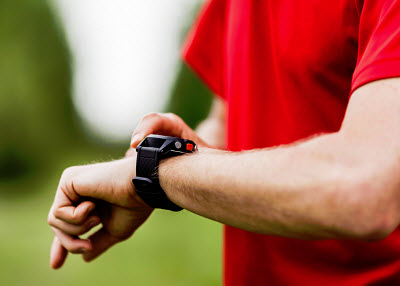A growing number of teams are finding that wearables are also helping to reduce the risk of injury.
Only three years ago, before wearable technology was as commonplace in the form of fitness trackers, it wasn’t uncommon for teams to use large, complex machinery to attempt to understand an athlete’s movements and habits in order to prevent injury and boost performance.
This was the case at the University of Toronto, where the varsity team had been using “what looked like a lab tool.”
This, according to engineer Rami Nabel, who was a student at the time and was weight training when he saw the tracking equipment used to try to track and analyze the performance of the varsity team. Nabel explained that the device that was used “was really intricate. There was a tripod, a display screen and a big box on the ground, with lots of wires everywhere.” Nowadays, though, wearable technology is accomplishing many of the same goals as that lab-style equipment, but in a much simpler way and at a much lower cost.
Nabel is now the founder and CEO of a fitness tracking wearable technology company called Push Inc.
 Push is enabled by smartphones and is based on an armband that the athlete wears in order to be able to track and analyze various different factors throughout strength training. The device s currently being used by more than 25 professional teams around the globe and, according to Nabel, “we’re growing in the college and amateur market as well.”
Push is enabled by smartphones and is based on an armband that the athlete wears in order to be able to track and analyze various different factors throughout strength training. The device s currently being used by more than 25 professional teams around the globe and, according to Nabel, “we’re growing in the college and amateur market as well.”
This plays into a rapidly growing trend that is using wearables to help to measure performance, and the companies that are grabbing hold of a part of this trend are finding that they can make a place for themselves relatively quickly at the moment, simply because the market has yet to reach its saturation point.
According to the Canadian City of Hamilton’s business development manager, Norm Schleehanhn, “We see performance analytics as an area ripe for growth.” In July, that city announced that the surrounding area would be focusing on this field in order to become a center of excellence within performance and wearable technology. “Tech companies can take advantage of our excellent sports facilities, world-renowned health networks and post-secondary institutions to create useful partnerships.”

 Research conducted by Experian Marketing Services showed that Boomers like mobile ads far less than Generation Xers and Millennials. This study revealed that among baby boomers, only 28 percent agreed that “my mobile phone connects me to my social world.” Among those in Generation X, the figure was 46.2 percent, and among Millennials, it was slightly higher at 53.5 percent.
Research conducted by Experian Marketing Services showed that Boomers like mobile ads far less than Generation Xers and Millennials. This study revealed that among baby boomers, only 28 percent agreed that “my mobile phone connects me to my social world.” Among those in Generation X, the figure was 46.2 percent, and among Millennials, it was slightly higher at 53.5 percent.